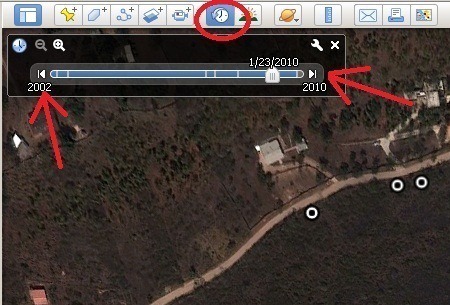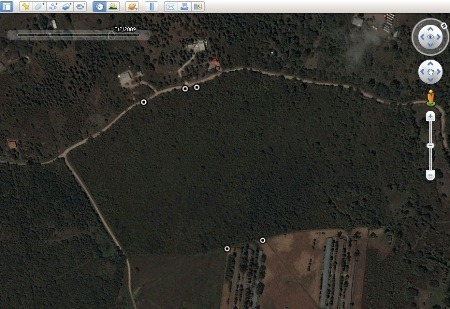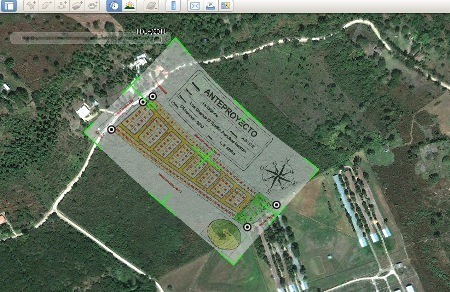It was one of the best Google Earth changes implemented in version 5, while allowing us to see what images are published annually, enables us to use the ones which have better resolution or relevance for our purposes. In many cases, because the most recent image has clouds that hide the object of our interest and in other cases because the level of detail was better.
To see the historic the little clock icon is activated, then you can drag the bar to go to the dates of image’s change. Although it is more practical to do with the arrows at the ends that lead to the next, the date it was recorded is looked up (possibly the year of decision), not necessarily when have been uploaded to Google Earth.

As a sample I’ll take this example, a project that I want to georeference.

This is the image of January 2010, look that the polygon boundary can not even be seen, despite the buildings at the top are already built and for cadastral purposes are more important because they involve an improvements reassessment.

This one is from November 30, 2007, four years before and note how clear is seen the limit. Above the new buildings are not viewed and the rest is covered with an annoying cloudiness. The only thing I can not solve is that as you download them with StitchMaps the historical bar appears bothering in each shot, one of my technicians made the joke that we shall tell people there are positions of aliens.
And this last shot is the blueprint of the planned urbanization, surely in about four years will be seen the development.

In matters of precision… it’s a calamity, because between one shot and another is up to 14 meters of difference… and nothing is close to reality. But for impact purposes, there’s a gain in Google Earth and Google Maps achievements and it is that has made the geolocation comes to everyday use.

 Autocad Software, Bentley Microstation, Gis Google Earth, Gis System Geomate Provides Services For Complete Gis Software And Solutions, Autocad Software, Autocad Courses, Bentley Microstation, Microstation Software, Gis Google Earth, Open Source Gis And More.
Autocad Software, Bentley Microstation, Gis Google Earth, Gis System Geomate Provides Services For Complete Gis Software And Solutions, Autocad Software, Autocad Courses, Bentley Microstation, Microstation Software, Gis Google Earth, Open Source Gis And More.